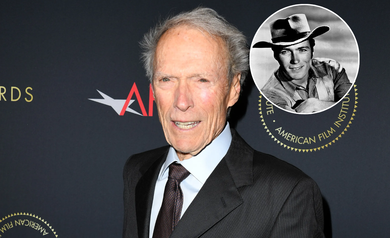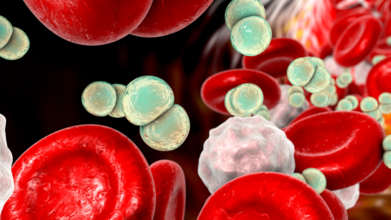- Health Conditions A-Z
- Health & Wellness
- Nutrition
- Fitness
- Health News
- Ayurveda
- Videos
- Medicine A-Z
- Parenting
- Web Stories
Clint Eastwood’s Secret To Staying Young And Healthy At 95

Credits: AFI
At 95, Clint Eastwood is still a testament to virility and understated strength still hard at work, incisive, and very much living on his own terms. Where most Hollywood actors depend on a battery of age-reversing tricks, Eastwood's technique lies in discipline, minimalism, and a decades-long dedication to healthy living. No gaudy supplements, no biohacking fads just plain sense tempered by routine.
Eastwood’s wellness journey began not in the gym or at a film set, but with the premature death of his father due to cardiovascular disease. That loss deeply impacted him, planting the seeds for a lifetime of preventive health practices. For Eastwood, longevity wasn’t a vanity project—it was a vow.
From then on, the actor-director doubled down on choices that would strengthen both his body and his mind. And while many in the entertainment industry were chasing the next health fad, Eastwood quietly adopted principles that science would later validate.
Meditation
One of Eastwood's most enduring health routines is Transcendental Meditation (TM), which he started in the 1970s. In contrast to many who practice mindfulness hit-or-miss, Eastwood has been a stickler—meditating regularly, sometimes twice a day, even when shooting a lot.
TM is the quiet repetition of a personally selected mantra for approximately 20 minutes, encouraging deep relaxation and "relaxed awareness." Research in peer-reviewed journals such as American Journal of Cardiology and Psychosomatic Medicine connects TM with decreased blood pressure, lowered cortisol levels, and enhanced cognitive performance.
Eastwood has attributed this discipline with keeping his head clear and his stress level in check. In a profession famous for mayhem and exhaustion, that clarity has probably helped not only his health, but also his remarkable productivity.
A Low-Fat, High-Impact Diet
Forget fancy detoxes or elimination diets. Eastwood’s dietary strategy is refreshingly practical. He opts for low-fat, nutrient-dense meals built around whole foods. That means lean proteins like salmon and chicken, paired with fibrous vegetables such as broccoli, asparagus, and dark leafy greens.
He keeps carbohydrates moderate and sugar intake minimal. No processed snacks or midnight nacho runs—when asked by Jimmy Kimmel if he indulged in wings or nachos, Eastwood’s response was clear, “None of that crap.”
This kind of diet supports metabolic health, reduces inflammation, and provides the steady energy needed for both physical activity and mental focus. And while he doesn’t follow any specific diet label—be it keto or paleo—the overall framework aligns with Mediterranean and Blue Zone dietary principles.
Hydration Over Hype
Another cornerstone of his health approach? Water. Eastwood is known to skip sugary beverages in favor of plain water. While that might seem minor, staying properly hydrated plays a critical role in cognitive clarity, digestion, and joint health—all especially important as we age.
Describing himself as a “lifelong gym rat,” Eastwood’s commitment to exercise hasn’t waned with age—it has simply evolved. In his younger years, he lifted heavy and trained hard. Now, the focus is on function and form.
He prefers low-impact activity: walking, golf, and light weight training. Instead of striving for personal bests, he values muscle protection, joint health, and equilibrium. As biographer Shawn Levy says, Eastwood's philosophy of fitness is deliberate and long-term: "He builds strength the way you build a house—brick by brick, rep by rep."
This mirrors advice from leading geriatric specialists, who emphasize the importance of strength training for older adults—not for aesthetics, but for mobility, fall prevention, and metabolic resilience.
Lessons to Learn From Clint Eastwood's Lifestyle of Longevity
What Eastwood demonstrates, without preaching, is that longevity isn’t the result of one miracle intervention—it’s the outcome of many small, deliberate choices repeated over time. And crucially, it’s not about perfection.
He doesn’t obsess over calorie counting or overtrain in the gym. Instead, he treats his body like a long-term investment. That includes managing stress through meditation, feeding it well through clean eating, and staying active through smart exercise.
It’s worth noting how much of his lifestyle overlaps with the habits of Blue Zone populations—those rare communities where people routinely live into their 90s and beyond. Things like daily walking, eating mostly plants, maintaining strong social ties, and managing stress effectively. Eastwood may not live in Sardinia or Okinawa, but he’s certainly aligned with the same timeless principles.
What is Transcendental Meditation?
The benefits of TM aren’t anecdotal. Clinical research has shown its impact on both physical and mental health. Studies from institutions like Harvard Medical School have documented reductions in stress, anxiety, and even symptoms of PTSD with regular practice.
TM also fosters better sleep quality, lower heart rate, and improved immune response. For an aging population, these are not just comfort perks—they are pillars of healthspan.
While not a substitute for medical treatment, TM can be a powerful complement to conventional care. And in Eastwood’s case, it’s a practice that has stood the test of time—five decades and counting.
What makes Clint Eastwood’s approach particularly noteworthy is its accessibility. There’s no need for expensive products, restrictive regimens, or tech-driven gimmicks. His longevity playbook is grounded in science, but also in discipline.
Healthy aging isn’t reserved for celebrities with personal trainers and private chefs. It’s achievable for anyone willing to prioritize their wellbeing and commit to the basics: nourish your body, move often, rest deeply, and manage your mind.
24-Year-Old Triathlete Faces Life Without Limbs After Sepsis Battle

Credits: Canva
Cardiff University medical student and triathlete Lily McGarry, 24, from Jersey, never imagined that what seemed like a mild case of “freshers’ flu” would spiral into a life-threatening illness. A fit, active young woman with a passion for swimming, running and triathlons, Lily’s life was turned upside down in January this year when she developed sepsis. Within hours, she went from watching television with her housemates to suffering two cardiac arrests, falling into a coma, and later losing all four limbs.
“I felt a bit under the weather, but I was still going about my daily life,” Lily recalled from her hospital bed at Cardiff’s Llandough Hospital. “I just thought I’d have a rest and sleep it off.”
From Flu-Like Symptoms to Emergency Care
On January 14, Lily went to bed believing she only needed rest. But her condition worsened overnight. Her housemate checked on her after noticing her bedroom light was still on and found her violently ill and incontinent. Friends Lucy and Ella rushed to clean her up and took her straight to A&E.
At first, Lily believed it was nothing serious. “I was able to walk into A&E, and I thought I’d just receive some antibiotics and go home the next day,” she said. However, her appearance of stability quickly deteriorated. A spreading rash and plummeting blood pressure revealed something far more dangerous.
In the resuscitation room, doctors moved swiftly. “I remember the consultant asking for my mum and dad’s mobile numbers,” Lily said. “That was the moment I realized something was very wrong.”
Also Read: What This 19-Year-Old Thought Was 'Freshers' Flu' Actually Turned Out To Be Meningitis
A Three-Month Blank
The next few months remain a blur. Lily fell into a coma and has no memory of the events that followed until April. During that time, she endured two cardiac arrests and was diagnosed with meningococcal septicaemia, a severe form of sepsis.
“I don’t think I really realized the scale of what had happened until about May when I was starting to look at my body,” Lily admitted. Her medical team explained that she had gone into septic shock, which starved her limbs of blood supply and ultimately led to amputation.
Understanding Sepsis
Sepsis occurs when the body reacts abnormally to an infection, damaging tissues and organs. It can strike anyone, regardless of age or health, and can progress at alarming speed. According to the UK Sepsis Trust, symptoms vary widely but there are six key warning signs to look out for:
- Slurred speech or confusion
- Extreme muscle or joint pain
- Passing no urine in 24 hours
- Severe breathlessness
- Intense feeling of impending death
- Skin that is mottled, discolored or very pale
If untreated, sepsis can cause organ failure, a drastic drop in blood pressure, and death. Experts stress that early recognition and urgent medical treatment are vital.
Adapting to a New Life
Despite the devastating changes to her body, Lily remains remarkably positive. “I’m fortunate to have lost my limbs in an age where there’s lots of technology,” she said. She is already looking ahead to adaptive sports, including hand cycling and returning to the water.
“I’ve always liked swimming and being in the water, and I’m really excited about the sense of freedom I’ll have without gravity in the water,” she said, hopeful about resuming her active lifestyle.
Lily is expected to return home to Jersey in November, where she looks forward to reuniting with her grandparents, spending time on the beach, and reflecting on her recovery.
The Power of Support
Her resilience has been matched by the outpouring of support from her community. Friends and family have launched fundraising campaigns to provide Lily with access to prosthetics and sporting opportunities. Messages of encouragement have poured in from Wales, Jersey and beyond.
Housemate Ella Jennings praised Lily’s character and determination: “She’s the most selfless person I’ve ever met. Since she’s got poorly she’s just that and more—so positive and determined. Honestly, she blows my mind. Every time I see her, she astounds me with her attitude and outlook on life.”
Looking Ahead With Strength
For Lily, the journey ahead will involve rehabilitation, learning to navigate life with prosthetics, and embracing new ways to remain active. But her focus is firmly on what she can achieve, not what she has lost.
“When you’re young, you think these kinds of conditions don’t affect you,” Lily reflected. “You feel a bit invincible. But I’m determined to make the most of the opportunities I have and to keep moving forward.”
Her story serves as a sobering reminder of how swiftly sepsis can strike, but also a powerful testament to resilience, positivity and the human spirit in the face of unimaginable challenges.
No Data, No Problem: Trump Team Stops Tracking Hunger After Food Stamp Reductions

Credits: Canva
The Trump administration has announced it will end the federal government’s long-running annual report on hunger in America, a decision that has drawn sharp criticism from advocates and experts. Officials say the survey had become “overly politicized” and “rife with inaccuracies,” while critics argue the move will make it harder to measure hunger amid recent cuts to food assistance programs.
Background: Cuts to Food Aid
The decision comes just over two months after President Donald Trump signed legislation that significantly reduced federal food aid. In July, Republicans pushed through a tax and spending cuts package that the Congressional Budget Office (CBO) projected would leave around 3 million people ineligible for the Supplemental Nutrition Assistance Program (SNAP), commonly known as food stamps.
The move represented one of the most consequential shifts in food policy in recent years, with concerns that millions of low-income households would lose a critical safety net.
Ending the USDA Hunger Report
The U.S. Department of Agriculture (USDA) confirmed on Saturday that the upcoming Household Food Security Report, scheduled for release on October 22, 2024, would be the last. The annual report has been a central tool in tracking hunger and food insecurity across the nation for decades, helping policymakers, researchers, and aid organizations assess needs and shape responses.
In its statement, the USDA defended the decision, claiming that the survey questions used to collect data were “entirely subjective” and did not provide an accurate reflection of food security.
“The data is rife with inaccuracies slanted to create a narrative that is not representative of what is actually happening in the countryside,” the agency said. “We are currently experiencing lower poverty rates, increasing wages, and job growth under the Trump Administration.”
The Administration’s Justification
The Trump administration pointed to positive economic trends as evidence that hunger is declining and suggested that the USDA survey was inconsistent with these broader indicators. Officials highlighted Census Bureau data released earlier this month showing that the U.S. poverty rate fell from 11% in 2023 to 10.6% last year, before Trump took office.
According to the administration, such numbers reflect the success of policies aimed at boosting wages and expanding job opportunities, making the hunger survey less relevant.
Critics Respond
However, critics argue that the decision to discontinue the hunger report is less about accuracy and more about obscuring the real impact of recent policy changes. Anti-hunger groups, researchers, and political analysts warn that without reliable annual data, it will be far more difficult to track whether food insecurity is rising, especially among vulnerable groups affected by the food stamp cuts.
“Trump is cancelling an annual government survey that measures hunger in America, rather than allow it to show hunger increasing under his tenure,” said Bobby Kogan, senior director of federal budget policy at the Center for American Progress, a left-leaning think tank. “This follows the playbook of many non-democracies that cancel or manipulate reports that would otherwise show less-than-perfect news.”
Advocacy groups also stressed that the USDA’s food security data has historically been considered the gold standard in hunger research, relied upon by both Democratic and Republican administrations. Eliminating the report, they warn, risks leaving policymakers “flying blind” when it comes to understanding the needs of low-income families.
Broader Implications
The end of the USDA hunger report highlights a growing clash between the administration’s claims of economic progress and critics’ warnings that poverty and hunger remain pressing challenges. While official poverty rates have dipped, millions of Americans continue to rely on food aid, food banks, and community support programs.
Experts say that without annual federal data, private researchers and non-profit organizations may struggle to capture the full picture of food insecurity nationwide, potentially weakening efforts to hold the government accountable for policy outcomes.
The controversy underscores the political stakes around hunger in America, where the battle over data is increasingly tied to broader debates about inequality, public assistance, and the role of government in supporting struggling households.
What This 19-Year-Old Thought Was 'Freshers' Flu' Actually Turned Out To Be Meningitis

Credits: SWNS
When 19-year-old Ketia Moponda set off from Wolverhampton to begin her first year at De Montfort University in Leicester, she was filled with the usual excitement of freshers’ week. But just eight days after arriving, what she thought was a simple “freshers’ flu” turned into a life-threatening battle with meningococcal septicaemia, as reported in the BBC. It is a rare and severe form of bacterial meningitis.
Within a matter of days, Ketia went from being a healthy teenager adjusting to university life to lying unconscious in hospital, fighting for survival. The illness would eventually claim both her legs below the knees and parts of her fingers, but Ketia has emerged as a determined advocate for awareness, warning other students about the risks and the importance of quick medical attention.
Mistaking Deadly Symptoms for Freshers’ Flu
Like many first-year students, Ketia brushed off her illness as something minor. “Don’t mistake everything for a common cold,” she now warns. “I made that mistake and went to sleep. It could have been fatal.”
Her memory of those final hours before being found is hazy. For 27 hours, she lay in her university accommodation, gravely ill. When worried friends and security staff finally entered her room, the scene was alarming. “As soon as they opened the door, they had to call the emergency services because it was described as looking like foul play,” she recalled. “There was blood and vomit everywhere. My body was failing.”
She was rushed to Leicester Royal Infirmary, where doctors placed her in a coma to stabilize her condition. Her family were driven under blue lights to join her, fearing the worst.
Defying the Odds
Doctors were not confident Ketia would survive. But after two days, she woke from the coma, unable to see or speak and barely aware of her surroundings. “I couldn’t see or speak and it was a whole week before I started speaking,” she said. “Most of the time I didn’t know where I was.”
The meningococcal bacteria had spread rapidly through her bloodstream, cutting off circulation to her extremities. The skin on her fingers and feet began to shrivel, swell, and turn painful. Despite antibiotics, her limbs could not be saved.
On January 7, 2025, doctors at Queen Elizabeth Hospital in Birmingham amputated both of her legs below the knees, along with parts of her fingers and thumbs. “Basically my legs had died because of a lack of blood going to them,” she explained. “It was terrible. I just kept crying all the time. I felt so hurt, it was killing my spirit.”
A Long Recovery Journey
Ketia spent five months in hospital, undergoing multiple surgeries, including skin grafts after developing a secondary flesh-eating infection. The experience was traumatic, but her determination to recover was evident. “I felt like my whole life had just begun and now I had to start all over again differently,” she said.
The road to recovery has been slow, but Ketia is now finding strength in her new reality. She has become active on TikTok, sharing her journey as a young, Black, female amputee, a representation she says is rarely visible in mainstream media. “It’s rare that you see an amputee just out there in front of your face,” she said. “Even though seeing an amputee is not normal, I want it to be a norm.”
Understanding Meningococcal Septicaemia
According to the NHS, meningococcal septicaemia is caused when meningococcal bacteria enter the bloodstream, leading to blood poisoning and, in many cases, meningitis, inflammation of the lining around the brain and spinal cord. It is less common than viral meningitis but significantly more dangerous, requiring urgent treatment with intravenous antibiotics.
Symptoms can appear similar to flu at first, including fever, headache, and nausea. But the illness can worsen very quickly, leading to confusion, vomiting, severe pain, and sometimes a distinctive rash. The NHS stresses that people should not wait for all the symptoms to appear or until a rash develops. If meningitis is suspected, medical help must be sought immediately.
Vaccination and Student Awareness
Many students in the UK receive the MenB vaccination during secondary school, which Ketia had also received. But the vaccine does not cover all strains of the bacteria, meaning cases still occur.
Each year, universities and health organizations urge new students to register with a local GP and familiarize themselves with the signs of meningitis. Some institutions distribute welcome packs with symptom cards to help students recognize warning signs early.
The NHS advice is clear: trust your instincts. If symptoms seem worse than a normal flu or cold, or if something feels unusual, seek urgent medical help.
Inspiring Others Through Adversity
Despite the life-altering consequences of her illness, Ketia is determined to transform her experience into a message of awareness and empowerment. She wants students to be vigilant about their health and to not dismiss symptoms too quickly.
She also hopes her story inspires people to rethink perceptions of disability. “Disability does not limit ambition, beauty, or confidence,” she said. Her presence online as a confident amputee challenges stereotypes and gives visibility to people often overlooked.
© 2024 Bennett, Coleman & Company Limited

